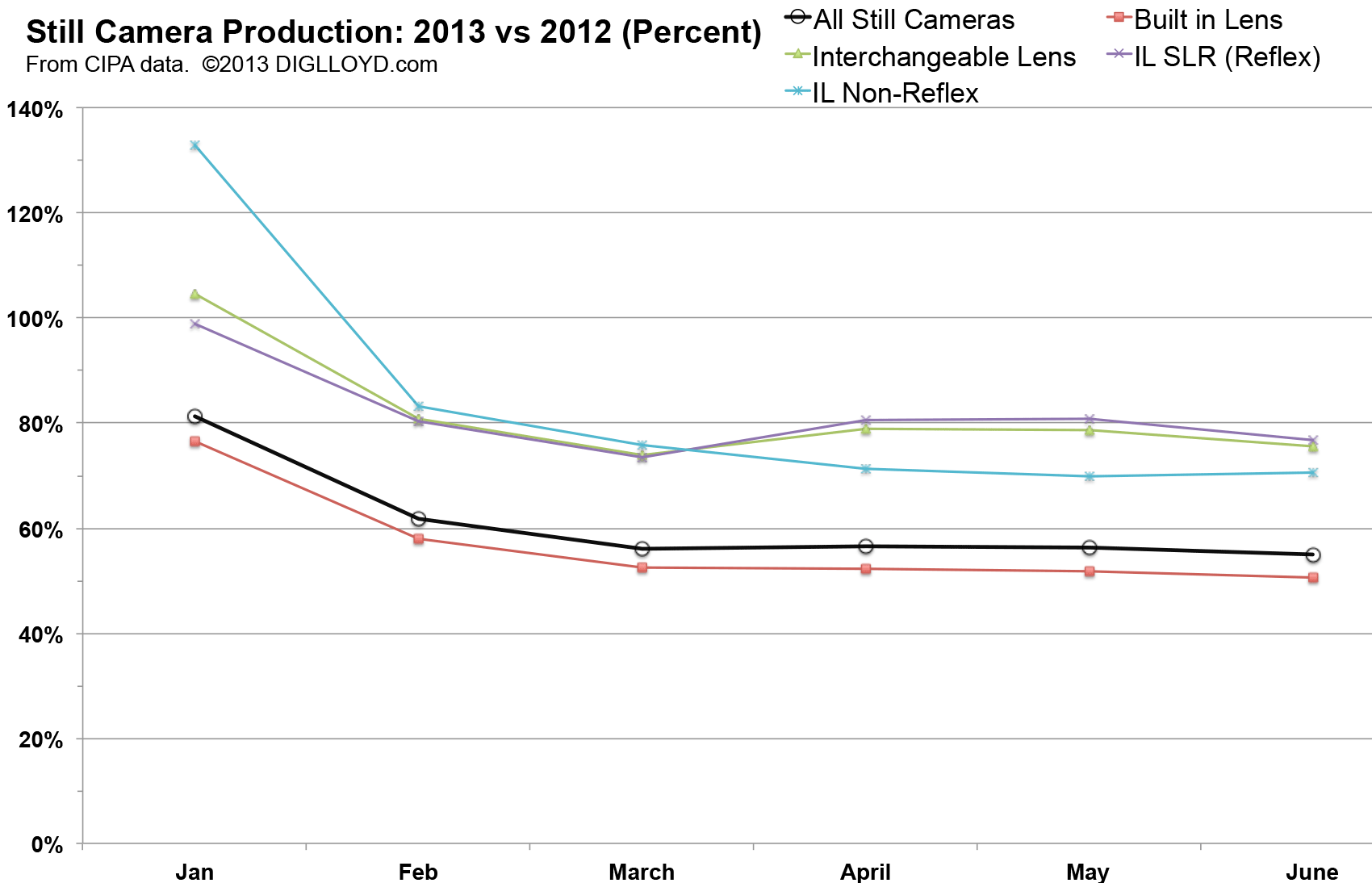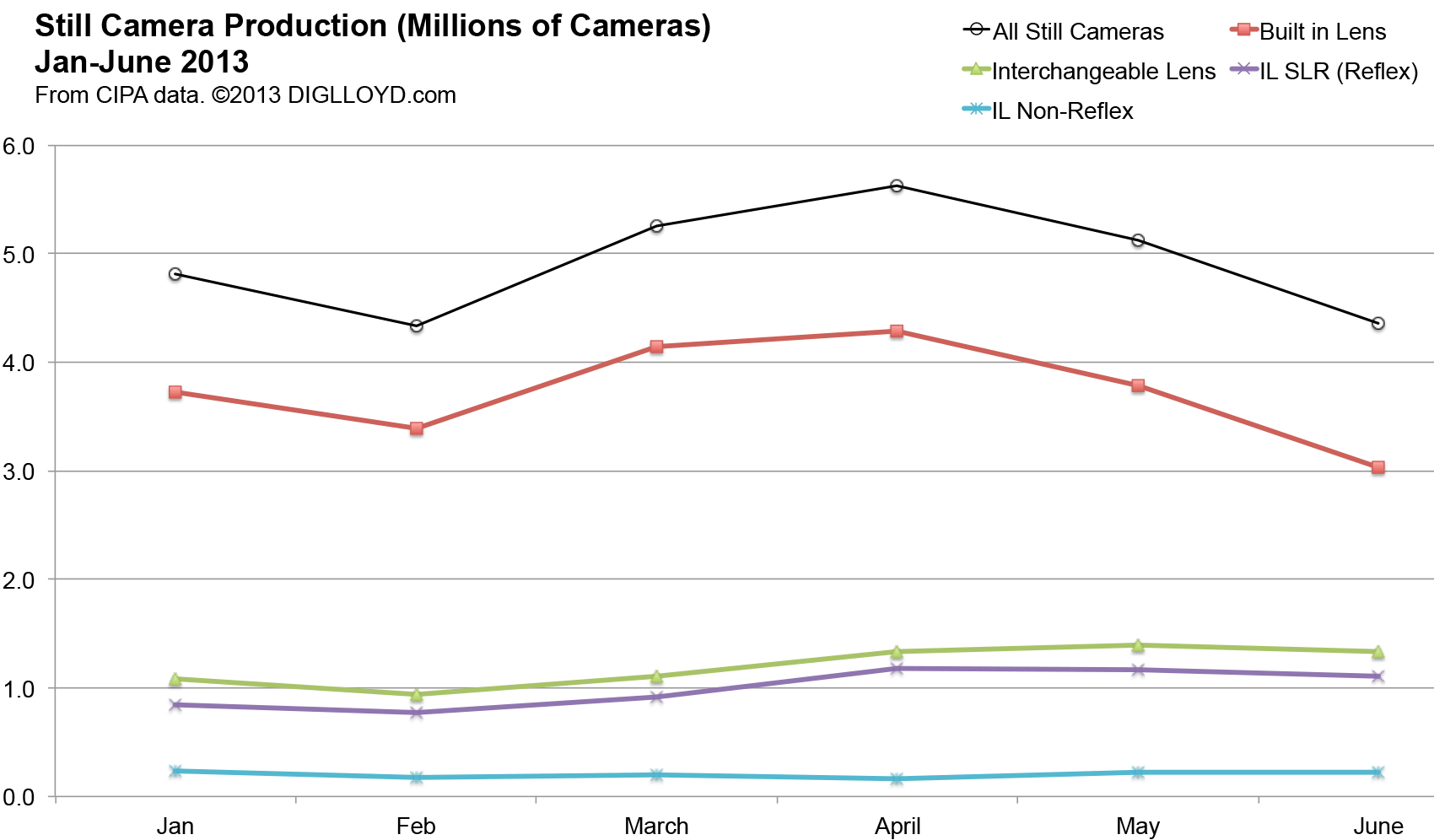Camera Production Figures (CIPA)
Using the CIPA numbers, I graphed the year over year production figures.
One should note that about 3/4 of total unit volume is point and shoot style cameras (“Built-in Lens”), a market in decline. But the vast majority of those cameras are low-end small sensor cameras, not premium fixed-lens cameras like the Ricoh GR or Sigma DP Merrill or Nikon Coolpix A; these could be on the upswing even as the entry level type are in serious decline: the entry level cameras are being displaced by smartphone cameras, their existential moment. Unfortunately the CIPA numbers do not distinguish between the two.
Observations:
- February was an inflection point at which production of all types of cameras was cut drastically relative to 2012.
- Interchangeable lens cameras (green lens) have held up far better than the low end point and shoot market (red line).
- Reflex (DSLR) cameras have held up better than non-reflex (mirrorless) interchangeable lens cameras in the March - June timeline.
This last point is interesting: it suggest that interchangeable lens mirrorless cameras are losing market traction relative to DSLRs! Which makes me wonder whether the demise of the DSLR is farther off than I had thought. The DSLR market is well established . It might be that the mirrorless alternatives still have to close many gaps to be a true replacement (lens selection, autofocus speed, image quality, usability, etc). Or it might just be that buyers anticipate new models this fall, such as a full-frame Sony NEX.
Year over year percentage change in the production of still cameras of various types.

per CIPA numbers
Cameras produced Jan - June 2013
Observations:
- Cameras with built-in lenses in unit terms outnumber interchangeable lens cameras by about 4:1.
- DSLR (reflex) cameras still dominate the interchangeable lens market, which says that systems like Sony NEX and Fujifilm X are still very small players by comparison.
Jan - June 2013 production of still cameras (millions of units).

per CIPA numbers























